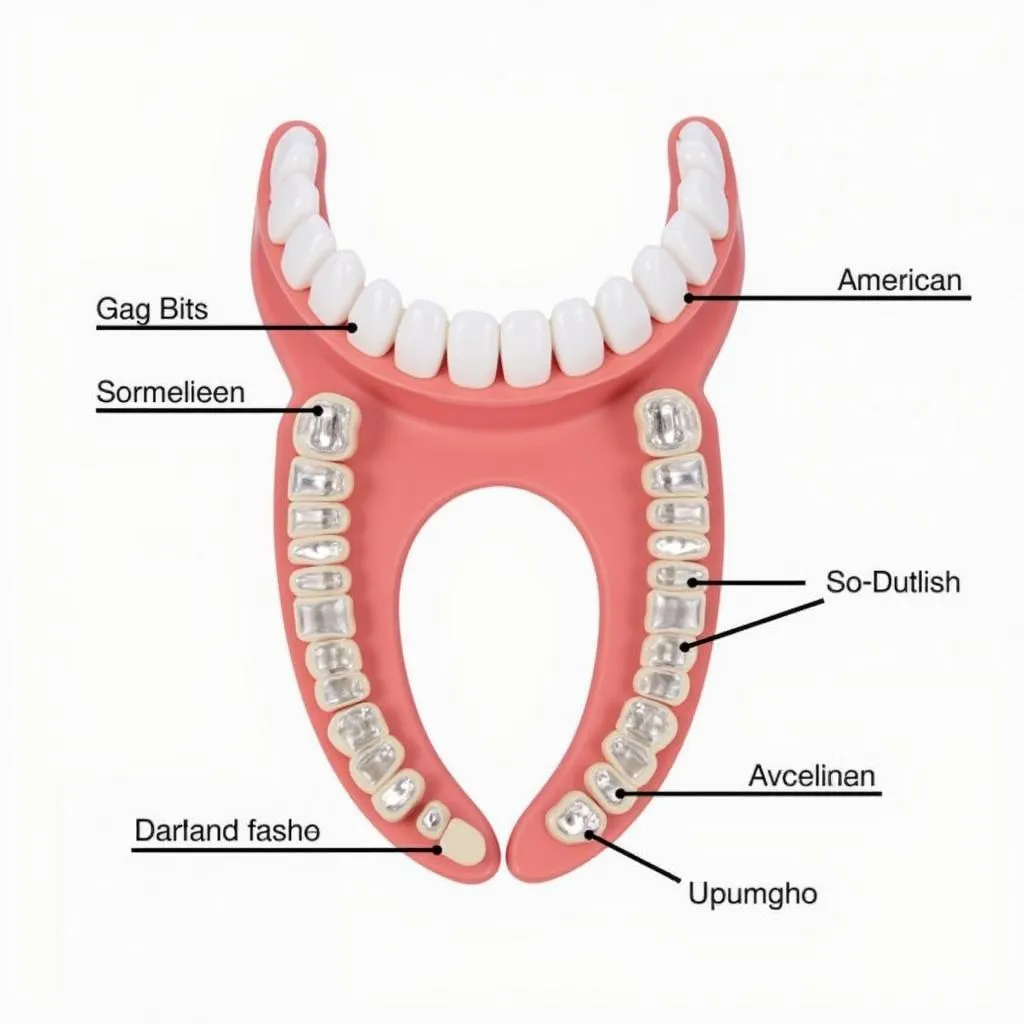Horse Bit Gags are a type of bit used in equestrianism, often misunderstood and misused. Knowing their purpose, mechanics, and appropriate application is crucial for any horse owner or rider. This guide aims to shed light on horse bit gags, providing valuable insights into their functionality and responsible use.
What is a Horse Bit Gag?
A horse bit gag is a type of leverage bit that applies pressure to the poll, chin groove, and corners of the mouth. Unlike snaffle bits, which work on direct pressure, gag bits use leverage for a more amplified effect. They are characterized by cheekpieces with rings or slots that allow the bit to slide up the horse’s face, increasing pressure as the reins are engaged.
Types of Horse Bit Gags
There are several types of gag bits, each with its own unique action and level of severity:
- English Gag: This common type features a single ring on each side, allowing for moderate leverage. It’s suitable for horses that require more control than a snaffle but don’t need the severity of other gags.
- Dutch Gag: Similar to the English gag, the Dutch gag has a double ring design, offering more leverage and a slightly different head position. It’s often used for horses that tend to pull or lean on the bit.
- American Gag: Also known as a “three-ring gag,” this bit has three rings on each side, providing the most leverage among gag bits. It’s typically used for horses that require significant control and are unresponsive to milder bits.
 Different Types of Gag Bits
Different Types of Gag Bits
How Do Horse Bit Gags Work?
Gag bits work by utilizing leverage. When the reins are engaged, the bit slides upwards, putting pressure on the poll, chin groove, and corners of the mouth. This upward pressure encourages the horse to tuck their head and yield to the rein pressure. The severity of the pressure depends on the type of gag bit and how high the reins are attached.
When to Use a Horse Bit Gag?
Horse bit gags are not suitable for all horses or riders. They are typically used in specific situations and disciplines where increased control is required, such as:
- Jumping: Some riders prefer gag bits for jumping as they can provide extra control and encourage the horse to tuck their head over fences.
- Cross-country: The added leverage of a gag bit can be beneficial in cross-country riding, where quick and responsive control is essential.
- Training: In some cases, gag bits might be used for short periods during training to help address specific behavioral issues like pulling or leaning on the bit.
 Horse and Rider Using a Gag Bit for Jumping
Horse and Rider Using a Gag Bit for Jumping
Potential Risks and Misconceptions
While horse bit gags can be useful tools in the right hands, they come with potential risks if misused:
- Excessive Pressure: If used incorrectly or with too much force, gag bits can exert significant pressure on the horse’s sensitive mouth, leading to pain, discomfort, and behavioral issues.
- Head Tossing: Horses may toss their heads to evade the pressure from a gag bit, especially if it’s not fitted properly or used harshly.
- Over-bending: Excessive use of a gag bit can encourage a horse to over-bend and hollow their back, which can negatively impact their movement and performance.
It’s crucial to remember that a horse bit gag is not a quick fix for training problems. Using a stronger bit doesn’t address the root cause of behavioral issues and might worsen them.
Choosing the Right Horse Bit Gag
Selecting the right horse bit gag requires careful consideration of the horse’s individual needs, temperament, and training level. Here are some factors to keep in mind:
- Horse’s Mouth Conformation: Horses with low palates or sensitive mouths might find gag bits uncomfortable.
- Rider’s Experience: Gag bits are not recommended for inexperienced riders as they require a high level of feel and timing.
- Severity of the Bit: Start with a milder gag bit and gradually move to a stronger one if necessary.
- Professional Guidance: Always consult with a qualified equine professional, such as a veterinarian or experienced trainer, before using a gag bit on your horse. They can help you determine if a gag bit is appropriate for your horse and guide you on proper usage.
Conclusion
Horse bit gags can be effective tools in the right hands, but they are not a substitute for proper training and horsemanship. Understanding their mechanics, purpose, and potential risks is crucial for responsible use. Always prioritize your horse’s well-being and seek professional guidance to ensure their comfort and safety. If you’re considering using a horse bit gag, remember to choose the appropriate type for your horse’s needs and use it with sensitivity and skill.
Need assistance with horse care or have questions about our products? Contact us at Phone Number: 0772127271, Email: [email protected]. Or visit us at our location: QGM2+WX2, Vị Trung, Vị Thuỷ, Hậu Giang, Vietnam. Our dedicated customer service team is available 24/7 to assist you.